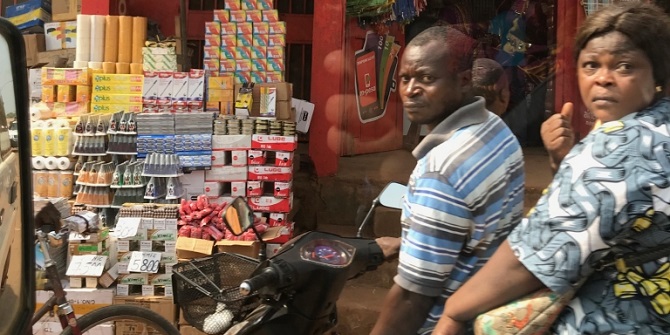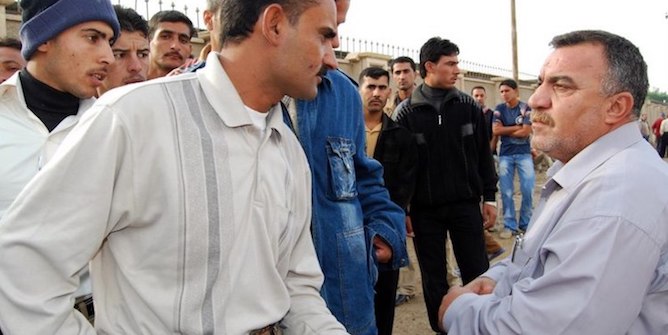
There was an atmosphere of hope in Afghanistan in February 2020, when the United States and the Taliban signed an agreement on the withdrawal of international troops from the country, conditional of intra-Afghan negotiations between the Taliban and the government of Afghanistan. After more than 10,000 civilian casualties annually for six years, there appeared to be an opportunity to end the bloodshed. Cautious voices pointed out that a successful peace process was going to take many years and warned that the agreement was driven primarily by US domestic politics, with peace in Afghanistan being a marginal concern. While the number of civilian casualties in the first nine months of 2020 reduced by 30%, the war in Afghanistan remained one of the deadliest in the word. In addition, a wave of assassinations has targeted civilians across the country, even in Kabul City, adding to bombings and a rising criminal problem and resulting in wide-spread fear. The insecurity does not only affect hopes in the peace process, it also undermines people’s trust in the ability of the state to protect its citizens. In addition, as the state is trying to protect itself with added security measures, it becomes even more distant from the people, further undermining its own legitimacy.
Life in fear: Assassinations & crime
On 17 January 2021, Zakia Herawi and Qadria Yasini, two women working as judges at the Afghan Supreme Court, were on their way to work in the morning, when several motorcyclists pulled up next to their Toyota Corolla in Kabul’s Qala-e-Fathullah neighbourhood. The motorcyclists opened fire on the vehicle, killing both judges, and fled the scene. Incidents like this have sadly become the new normal. In particular, people representing the state, working for the state, being associated with the state or advocating for the values that the Afghan constitution stands for, such as, crucially, human rights and freedom of the press, as well as many others, have been under attack, shot on the street, or targeted with magnetic IEDs attached to their vehicles. The assassinations add to an already wide-spread fear of suicide attacks. In Kabul, some people now even carry a note with name, contact details and blood type in their pocket to prevent anonymous death. As if this was not enough, Kabul’s population has been confronted with a growing crime problem. Violent robberies, car jackings and murders have become common, further curtailing daily life in the city.
The state’s inability to protect its citizens
The growing insecurity reminds the Afghan public on a daily basis that the state is neither able to protect them, nor is it capable of investigating the perpetrators. It is likely that the Taliban are responsible for at least a considerable share of the assassinations, with others possibly also using the opaque security environment to target opponents. Nonetheless, who exactly is responsible for the attacks remains unknown and the series of the assassinations continues, making people fear about who might be the next person on their list to be targeted. The international community trained the Afghan security forces largely to fight against the Taliban rather than to do civilian policing and to provide human security by protecting civilians. For example, many members of the Afghan National Police were trained in short term courses that focus on the use of weapons rather than traditional roles of police officers, such as investigating crime. Hence, the perpetrators of crime and violence often remain at large. Accordingly, trust in the state’s security forces to provide security and to prevent and investigate attacks and crime is very low. Even worse, the police are widely considered to be responsible for crime and corruption themselves. Today, many people view the security forces as a source of insecurity – even in Kabul City, where people often are proud of the Afghan National Defence and Security Forces and their fight against the Taliban. In the context of growing criminality on the streets of Kabul, many accuse the security forces of being actively involved themselves, benefitting from corruption or even being part of criminal networks. “If you see a police officer on the street, you want to go another way”, an interviewee, ironically an official in the justice sector, told me.
A growing gap between the state and the people
Quick-fix security measures tend to further distance the state from the people. Since the international intervention in Afghanistan in 2001, in what Ruben Andersson and I called a vicious cycle of distance and danger, each wave of violence has resulted in a push for more checkpoints, blast walls and armoured vehicles by those able to afford such expensive protection – most notably representatives of the international community, high-level government officials and influential commanders. As I illustrated in the recently published book Cities at War, these security practices and measures have shaped the urban geography and daily life within Kabul, for instance, by turning public places into securitised spaces that only certain people can enter. The security measures have created physical distance between the state and the people, even in Kabul City, where ‘the state’ – with the presidential palace, parliament, ministries and headquarters – is geographically close to the people. Government offices remain hidden behind blast walls that block the roads for ordinary people and convoys of armoured vehicles cause additional traffic jams. Meanwhile, most people who are not deemed high-profile enough and cannot afford expensive protective measures such as armoured vehicles, remain extremely vulnerable to attacks and have to continue fearing for their lives. This puts the state at risk of being viewed as working in favour of a small elite only, unwilling or unable to address the concerns of ordinary people.
Conclusion
Twenty years after the international intervention in Afghanistan, assassinations, suicide attacks, crime and other forms of violence continue to have a grim impact on people’s daily lives in the country. Feeling unprotected, the insecurity adds to people’s decreasing trust in the state. Trying to protect itself with tough security measures, the state further distances itself from the people, widening this chasm. While this gap is consciously driven by insurgents who want to delegitimise the state, it is also the consequence of an international statebuilding project that failed to create institutions that protect the Afghan population. To break out of the vicious cycle of insecurity and distrust, the Afghan state, and the international community, will have to prioritise the security of ordinary Afghans.
Note: The CRP blogs gives the views of the author, not the position of the Conflict Research Programme, the London School of Economics and Political Science, or the UK Government.





